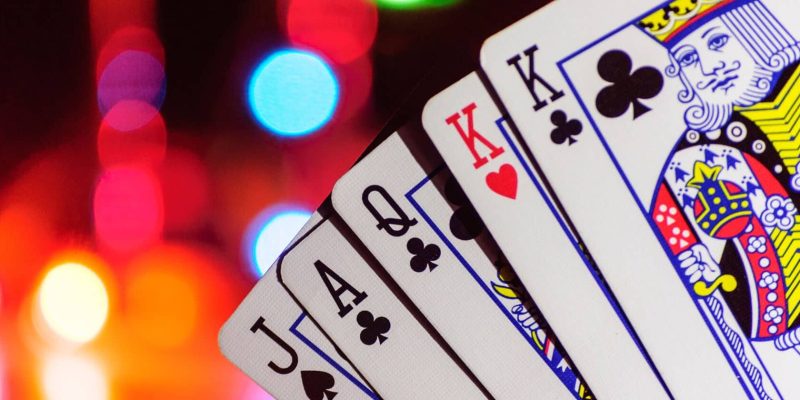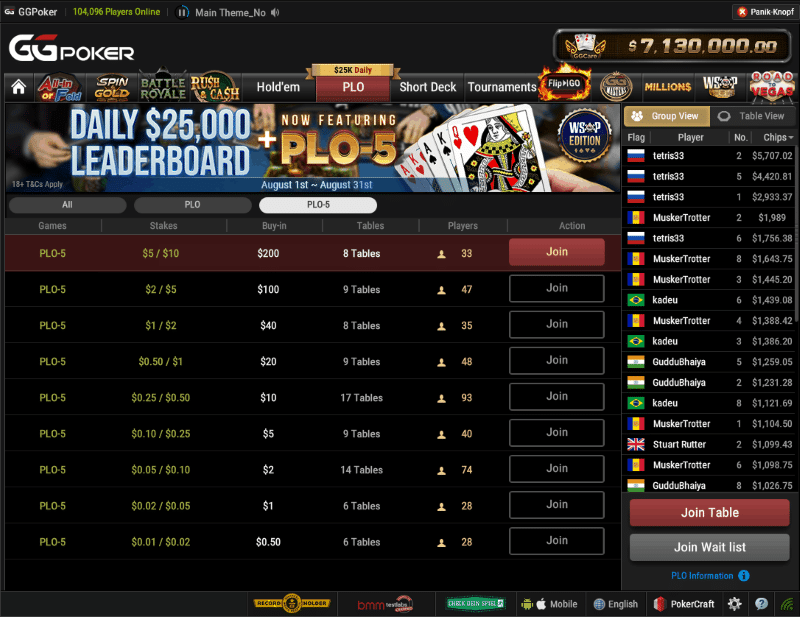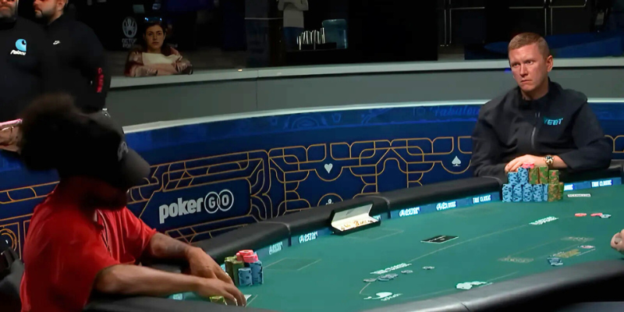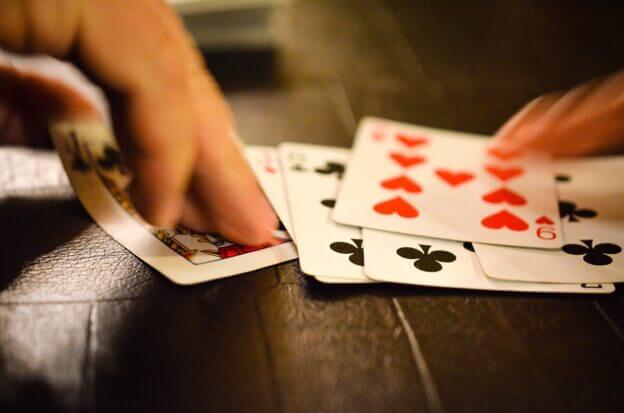5-card PLO rules are the same as 4-card PLO rules. You have to make your hand using forcibly 2 of your hole cards along with 3 out of 5 community cards. The only difference is you get an extra hole card, for a total of 5. In this article, I’m going to give you some of the key strategic insights that I have identified to this date.
1. Translating Concepts from 4-Card
The reason it is so valuable to have a more fundamental educational path in poker is that when you do make a transition to a new game, you’re able to draw from the same concepts and learn by taking those concepts into the new game and drawing conclusions.
In 5-card, you can use the same concepts as in 4-card, but your edge lies in understanding how these concepts translate. For example, recognizing that the 5th hole card means that double suited Kings are a lot less valuable and that the side cards are very important.
As with the difference between PLO and NLHE, having an extra hole card in 5-card PLO makes a huge difference. There are around 2.6 million possible starting hand combinations in 5-card PLO, as opposed to 270,000 in the 4-card version.
Calling
Cold-calling frequencies will increase because you have more equity with the medium-strong hands and are more incentivized to enter the flop. Your overall VPIP should increase based on the fact that you are going to defend the blinds more often and you will cold call in position more often.
Although, your VPIP could be a little bit smaller exploitatively, considering the fact that people are playing way too many hands.
As people play too many hands, similar to what happens in 4-card low stakes, you have to tighten down because you need a hand that can win and dominates against multiple players more often than in GTO.
Betting
You probably want to bet bigger in certain spots, because your opponents will have more equity on average against your value range.
You need a lot more additional equity to justify betting a hand that has little equity against your opponents’ range. You will get called more often, but you also need some protection.
Leading into de preflop raiser denies opportunities where they can effectively bluff us. If you let your opponents get a free card, they have an easier time representing hands in the turn or the river.
You want to lead a bit more often in 5-card PLO. As you have 5 cards, and thus more potential blocking cards, there is a higher removal effect. So there is more incentive of leading in heads-up and multiway pots alike.
Suits
Having single- and trip-suited cards in your hand at the same time is something that simply doesn’t exist in 4-card PLO. It has a significant effect on the way you’re going to play your hand. This
In 4-card PLO, the raw equity of a single-suited hand is very similar to a trip-suited hand, but there is a large gap in the playability implications. A triple-suited hand is going to take away value, and that effect is also holding true in 5-card Omaha. It’s an important playability factor.
Nutiness
Quality really matters in 5-card PLO. Nutiness remains very important. It is so much easier to get a double-suited hand that looks pretty good, but you need to resist the temptation to enter the pot with all the double-suited junk hands.
King-high suits in certain situations are just not nutted enough anymore. People see a lot of multiway pots and in multiway pots with a non-ace-high suit is dangerous, maybe more even than in 4-card PLO.
Exploitation
What I see a lot is people overvaluing their hand strength pre and post flop.
In the beginning stages of a new game in the market, it’s normal to see a lot of players playing too loose. You will naturally come across a wider range of skills and player types since players are trying out new things and ideas and haven’t spent as much time studying the game.
The principle of slow playing and checking behind very strong hands still exists, but the degree of what qualifies as a very strong hand changes. You need a lot more combined blockers to justify a slow play because otherwise, you’re just giving away free cards to your opponent.
Generally speaking, you can expect to see fewer bluffs, and also fewer hero calls overall. Here is 5-Card PLO Mastermind Coach Suhepx on bluffing in 5-Card.
2. Best Starting Hands in 5-Card PLO
It is crucial that you put a lot of time and effort to get good at pre-flop. It’s the most fundamental part of 5-card. Because you have an extra card, it makes pre-flop that much more important. Poor pre-flop play will result in poor flop play, which results in poor turn play, and so on.
There are 3 main pre-flop components in 5-card PLO: Nutiness & High-Card Strength, Connectedness, and Suitedness. The more of these components we have (and the higher they are), the stronger our starting hand will be.
Nuttiness & High Card Strength
What you have to think about in Omaha is that nuttiness potential matters a ton before the flop. You have to win against a lot of hands post-flop, and you do that by adding nutted components to your hand. And when your stack is shorter, the value of high cards increases.
With 5 holecards it becomes very easy to make hands. If we have lower cards, not only are we at risk of being dominated, we are also more at risk of being outdrawn compared to 4-card, as equities run closer. It’s very easy to have a strong made hand, or nutted hand (25% of all hands have A-High suit). So, if we enter a pot with non-nutted components, it’s very likely that our opponent will have them.
Connectedness
As with the previous components, it’s easier to make hands like straights in 5-card PLO. The less connected we are, the more we ar likely to be dominated or outdrawn.
Connectivity might be underappreciated or undervalued by some players. In 5-card PLO, when your hand is very connected it means 5 cards are connected, not only 4, and that just makes the hand much stronger.
The straight draws (so to speak) that you can have preflop just have much higher quality, much more equity, and much more nuttiness as well. And vice versa, if we have a not-so-connected hand, it really takes away a lot of value.
Suitedness
It’s much easier to have more combinations of double-suited hands. Around half of starting hands in 5-card PLO will be double-suited. this makes being aware of what kind of suits you have very important. If you have a hand with low-suits (even if it’s double-suited) it will be very likely that you opponent has you dominated with a higher flush draw.
When you only have a single-suited hand you have to pay very close attention to your side cards, you want to be very connected when playing the hand. You want to focus on high connectivity to have a better straight draw than your opponent so you can dominate them post-flop. In the next clip, 5-Card Mastermind Coach F1tz goes into nut-flush considerations.
Pocket Aces
Having a pocket pair is not considered a primary component, as it is not as valuable as the others. Apart from having Aces, we very often need good additional components to make our hand playable.
Here are 3 quick takeaways that can help you better understand the strength of pocket Aces in PLO 5-card, taken from Poker Tool’s Odds Oracle.
- We have about 60% more Aces (AAxxx) in 5-card Omaha compared to 4-card. This sums up to 4.17% of all starting hands in 5-card vs 2.57% in 4-card.
- AAxxx combos rank in the top 30%, which is a lot compared to the 5% rank cap for AAxx in 4-card PLO.
- 47% of all AAxxx are double-suited in 5-card PLO (holding at least one Ace-high suit), compared to 12.5% of AAxx being double-suited in 4-card.
In this video, 5-Card Mastermind Coach Suhepx covers what to do when facing a 3-bet while holding Aces in 5-Card PLO (UTG vs MP).
3. 5-Card PLO Trainer
5-Card PLO Trainer is a cloud-based PLO software that allows you to access already pre-solved pre-flop and post-flop GTO solutions, within a few seconds and in just a few clicks.
It’s a simple, intuitive way to learn GTO 5-card strategy. You can navigate between positions and stack sizes, load pre-solved simulations, all within a cloud-based application.
There is no download required to use 5-Card PLO Trainer, as its simplified interface runs directly in your browser. It is also included in our 5-Card PLO Mastermind bundles.
Post-Flop Analysis
Post-flop analysis in our 5-Card PLO Trainer is an extremely quick and intuitive task. Here’s a quick overview of how to navigate and train 5card ranges and categories.
4. Where to Play 5-Card PLO
If you’re looking to play 5-card PLO online, the best option among regular sites is the GGNetwork, accessible via their flagship site GGPoker and other skins such as Natural8. There are a few alternatives such as Pokerstars and the popular poker apps like Pokerbros, PPPoker and Upoker.
Traffic
Pokerstars provides relatively little action. A couple of tables of PLO25 and 50 are running, but that’s about it. GGPoker offers plenty of action throughout the day regardless of which time zone you’re in.
The traffic in the poker apps depend on where the club is oriented. If a club consists of mainly players from the US, the peak hours are generally during American evenings and nights.
The apps are very popular because they offer players from restricted markets a chance to play online poker. 5-Card PLO has been one of the most favored formats for a couple years already.
Rake Structure
Pokerstars offers 5-Card PLO for the stakes PLO25 (blinds $0.25-$0.50) up to PLO40k ($200/$400). Here’s the rake structure:
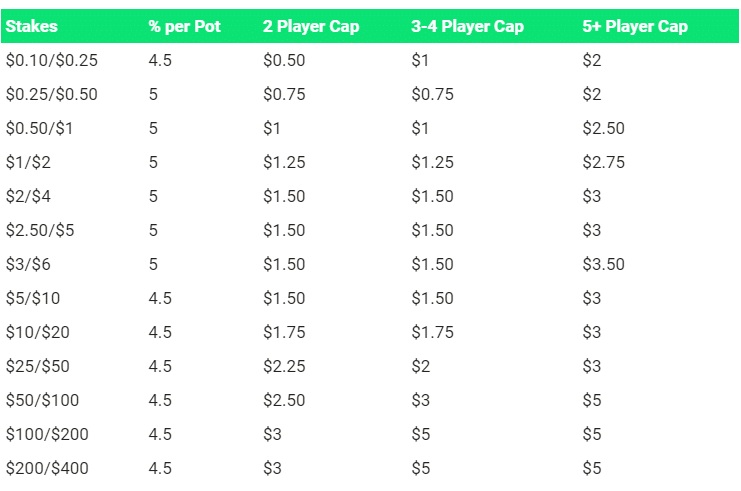
GGPoker offers 5-Card PLO for the stakes PLO2 up to PLO1k and high stakes VIP games from PLO5k up to PLO40k. Per pot, 5% is charged across all stakes.
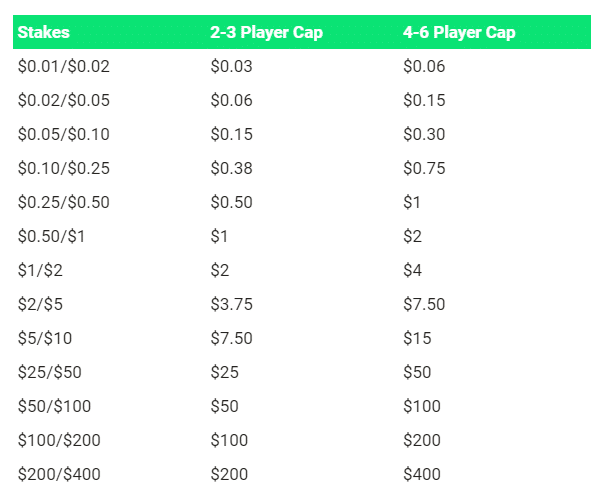
The apps offer 5-Card PLO for basically all stakes but can vary across individual clubs.
The rake structure is 5% charged per pot with a 3 big blind rake cap. This means a rake cap of $0.75 at PLO25 and $3 at PLO100. For PLO600 ($3/$6) and higher stakes, the rake cap generally becomes 2 big blinds.
Rakeback
Pokerstars offers chest rewards with approximately 5% value long-term. They’re currently testing a new rakeback system where 20% of their players have access to.
If this new rakeback system is going to be adopted, players will earn at least 15% rakeback up to a maximum of 65%. High-volume players can earn additional rakeback through the daily Omaha cash game leaderboards.
GGPoker offers rakeback through it’s Fish Buffet program. Players earn a minimum of 15% rakeback up to 60%, based on their Player Value Index (PVI). High-volume players might benefit extra from the daily $25,000 (5-Card) PLO leaderboard.
Conclusion
5-Card PLO is a very popular game and has remained popular to this day. It’s prominent on poker apps (as is 6-Card PLO), and is attracting a lot of recreational players.
In 5-card PLO, you need stronger hands to build the pot, and side cards matter more. Play tighter against players that are playing too many hands, and remember the quality of suits matters a lot more than the quantity of suits.
Poker is always changing, this means that sometimes the game that recreational players are playing will change as well. So the player that can adapt the best, and the earliest, will have a massive advantage.
To aid you in this journey, we created the 5-Card PLO Mastermind, which can be purchased as a bundle with our 4-card membership, and includes training videos, 5-Card PLO Trainer, and access to our discord community.
